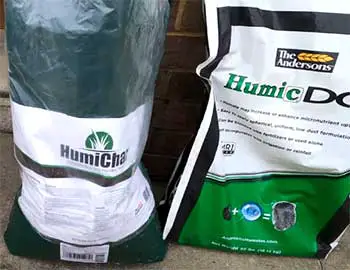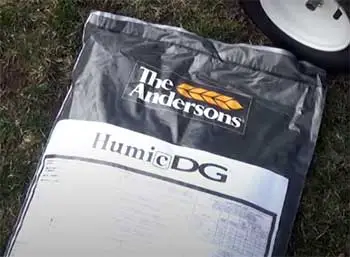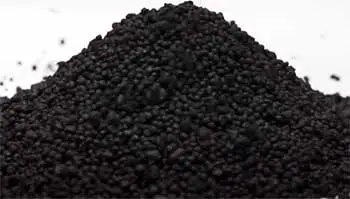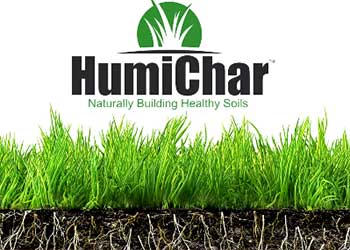Are you looking for the best organic soil amendment solution between Humic DG and HumiChar?
If so, you are in the right place. Because here I will give you a better understanding of these two soil amendment products. Read my comparison between Humic DG and HumiChar review to know more.
The main difference between these two soil amendment products is that Humic DG increases carbon and organic matters in the soil. In contrast, HumiChar improves soil health and reduces the use of fertilizers. They have differences in their formation too.
This article will show you detailed features of both products and compare them. You can easily decide which one will be the best use for you in the end. So, let’s get going.
A Quick Comparison Table
Here is a quick comparison table between Humic DG and HumiChar organic soil amendment:
| Aspects | Humic DG | HumiChar |
| Product Type | Highly Concentrated Soil Amendment | Soil Amendment |
| Special Feature | Contains Four Active Biological Components | Has Two Components In Its Formula |
| Benefits | Offers Many Benefits | Offers Fewer Benefits |
| Usage | A lot of Usages | A lot of Usages |
| Available Sizes | 11 lbs., 40 lbs. | 12 lbs., 40 lbs. |
In-Depth Comparison Between Humic DG And HumiChar
You have drawn some basic ideas on these products from my above comparison table. But to make e decisive decision, you need to know every nitty-gritty of both solutions.
Stick with me here because I’ll show them here in detail.
- Product Type

Humid DG and HumiChar are carbon-based organic soil amendment formulas made by the same company.
They are designed to serve similar purposes. Nevertheless, there are some subtle differences between them.
Humid DG is highly concentrated and contains 70% fulvic acid, humic acid, and humin in its formula.
It is a Dispersible Granule or DG formula made under the Andersons’ patent.
On the other hand, HumiChar contains 50% superior humic acid and 50% granulated biochar. The combination provides a quick and excellent response in soil treatment. But, HumiChar is also made under the DG formula, allowing it to disperse when watered.
So, HumiChar is a lot different than Milorganite too in this regard.
- Features
Humic DG contains four active biological components. They are fulvic acid, humic acid, humin, and HAP. It helps plants take nutrients, increases soil carbon level, seed germination, etc., to increase soil and plant health.
Besides, Humic DG chelates nutrients and make them available for a longer time for soil and plants. You can use it with fertilizer, or you can use it alone.
On the contrary, HumiChar has two components in its formula: 50% high-quality humic acid and 50% granulated biochar. These elements help the procedure remain longer and in the soil and make it better in the long run.
On top of that, you can use fertilizer after or with HumiChar, but it’s not mandatory. Besides, this solution is environmentally friendly.
- Benefits

You can improve soil structure in all soil types and make them drought tolerant.
Using the formula will help increase the nutrient intake capacity by making them readily available for plants.
Besides, it enhances the efficiency of fertilizers.
Because of the high concentration of minerals and organic acid, you can increase the carbon and minerals in soil by using this formula.
On top of that, it is easy to spread, and it won’t harm or burn your lawn.
In contrast, HumiChar is easy to use. It makes nutrients readily available for plants. You can quickly amend the soil and keep it that way for a long time.
- Different Usages
Although both products are made for similar purposes, they work better in a few similar places and some different areas.
For example, Humic DG works excellently on turf, gardens and flower beds, trees and shrubs, and potting soils. On the contrary, HumiChar works better when you use it for old establish laws, new lawns and sods, garden and landscape beds, etc.
- Available Sizes
Humic DG is available in two size packs. You can choose between a smaller 11 lbs. bag and a much larger 40 lbs. bag. In contrast to Humic DG, HumiChar is also available in two sizes. A 12 lbs. bag and a 40 lbs. bag are available to purchase.
Both formulas can cover up to 40,000 square feet of soil when appropriately applied.
- Price
An 11-pound Humic DG costs $32.88, whereas a 40-pound bag costs $69.88. But a 12-pound HumiChar costs $31.88, and a 40-pound bag costs $90.88.
As we can see, Humic DG costs slightly higher when you purchase the smaller bag. But HumiChar costs significantly higher when you buy a big-size bag.
- Warranty
As both products belong to the same company, the warranty will be the same for them. You will get 4 years of warranty for both products. However, you have to contact them to know more about warranty terms directly.
All About Humic DG

Humic DG is derived from leonardite, which is an oxidized form of lignite coal.
Mined leonardite goes through a proprietary extraction process to concentration the humic acids, resulting in a dry, granular product containing up to 70% humic acids by weight.
The humic acids in Humic DG carry a strong negative charge, allowing them to bind positively charged nutrients like calcium, iron, potassium, and magnesium. This helps retain nutrients in the root zone. The humic acids also bond with the soil particles themselves, helping improve soil structure.
Some key benefits of Humic DG include:
- Boosts nutrient availability and retention
- Improves soil tilth and structure
- Promotes healthy root development
- Environmentally friendly and safe for organic gardening
One downside is that Humic DG itself contains very little in the way of plant nutrients like nitrogen, phosphorus or potassium. The product mostly contributes the humic acids themselves.
All About HumiChar
HumiChar takes a different approach – it combines biochar with compost and subjects this blend to further processing for several weeks under controlled conditions. This process enriches the biochar with up to 30% humic acids by breaking down and oxidizing the organic matter in the compost.
The result is a granular product with high levels of stable carbon from the biochar plus humic acids and an abundance of macro and micronutrients from the finished compost.
Some benefits of HumiChar include:
- Provides humic acids to improve soil properties
- High porous biochar stores nutrients and water
- Contains a diversity of macro and micronutrients
- Very high carbon content improves soil biology
- Produced from recycled organic waste streams
The tradeoff is that it generally has a lower humic acid content by weight compared to concentrated products like Humic DG. But the combination of humic acids, stable carbon, and diverse nutrients make it very appealing for improving soil health.
Humic DG Pros and Cons
Pros

- Very high humic acid content up to 70%
- Boosts soil cation exchange capacity (CEC)
- Cheap per pound of humic acids
- Easy to apply dry or dissolved
- OMRI listed for organic production
Cons
- Doesn’t directly provide nutrients
- Derived through mining and extraction
- Limited carbon benefits beyond humic acids
- Needs reapplication every season
HumiChar Pros and Cons
Pros
- Provides stable, long-lasting biochar carbon
- Supplies a diversity of macro and micronutrients
- Cheap per unit of carbon added to soil
- Made from recycled organic materials
- Lasts 3-5 years in soil
Cons
- Lower humic acid content by weight
- Higher cost per unit than plain biochar
- Limited independent research published
- Can temporarily tie up some nitrogen
Now that we’ve explored the key features, benefits, and tradeoffs of each product, let’s look at some frequently asked questions.
Which One is Best For You?

My above discussion clearly shows that both Humic DG and HumiChar provide excellent results in soil amendment.
So, you can become a little confused about choosing one. You should choose one based on the usage.
First, determine where you will use this product. I have discussed which product is best for what place.
Use them accordingly.
Frequently Asked Question (FAQ)
HumiChar is biochar that can be easily spread on a lawn with a lawn spreader. After spreading, it reaches the surface soil very fast and starts working.
Humic DG is an organic carbon-based soil amendment solution made from fulvic acid, humic acid, and humin.
HumiChar is made from two components, and humic acid is one of them. There is 50% humic acid in HumiChar.
Humic DG is not a fertilizer. It is a carbon-based soil amendment that can work with fertilizer. Using it can reduce the use of fertilizer.
HumiChar can be applied any time of year, but early spring or fall is ideal as plants enter growth phases. It works well in vegetable and flower gardens, lawns, tree and shrub beds, and with both indoor and outdoor cannabis.
Most experts recommend applying Humic DG at least once per year, either in fall preparing beds for spring or in early spring before planting. It can be applied more frequently during the growing season if desired, such as monthly for potted plants, raised beds, or high-value vegetable crops.
Conclusion
Humic DG and HumiChar can heal your soil and make your plants healthy. Using them on your lawn will have a lot of benefits. After reading my Humic DG and HumiChar review, I’m sure it’s absolutely clear to you.
Now that you’re aware of the differences between both products, I’m sure you can choose one that will fit your project.
